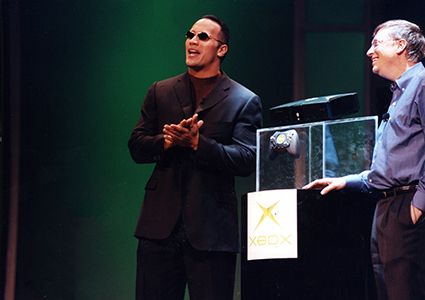Since CTA’s start in 1924 as the Radio Manufacturers Association, U.S. technology companies have had an advocate on Capitol Hill and across the country for innovation and free enterprise. As the competitive and regulatory climate has changed, so has our association. Find out in this five-part series how CTA has led industry growth and supported technology innovations that are solving big global challenges. This article, the series fourth, summarizes how CTA navigated the digital-tech tide.
From 1995 to 2014, the tech landscape experienced a sweeping transformation driven by digital innovations. Amazon and eBay launched in 1995. Also that year, Holiday Inn opened the first hotel web site that enabled online bookings. Wi-Fi became publicly available in 1997. Two years later, the first version of Bluetooth debuted and, by 2000, some 60% of households owned at least one computer. Just seven years later, Apple revolutionized the mobile-phone industry with its release of the iPhone. By 2014, use of paper had plummeted as businesses and marketers turned to digital alternatives to inform and sell.
The tech industry was churning as new digital-driven platforms, systems, applications and products emerged to make work and leisure pursuits easier, more accessible and more engaging. These nearly two decades were equally transformative for CTA as the association evolved to tackle fresh industry challenges and opportunities that accompanied the public’s increased access to the internet.
1995-2000: Championing, and Honoring, Industry’s Visionaries
In 1995, EIA’s Consumer Electronics Group (CEG) became the Consumer Electronics Manufacturers Association (CEMA). Gary Shapiro, who joined in 1982, was named CEMA president. Then, in 1999, CEMA streamlined its name to Consumer Electronics Association (CEA), a brand that better reflected the organization’s diverse membership, and member companies’ products and services. Now an independent nonprofit corporation, CEA was better prepared to move into the 21st Century as a powerful yet flexible leader. In 2000, CEA launched the Consumer Electronics (CE) Hall of Fame to commemorate the technology pioneers. The Industry Forum awards dinner was established to recognize the hall’s inductees.

In an iconic CES moment, Dwayne “The Rock” Johnson and Bill Gates introduce the Xbox at CES 2001.
2002-2003: CEA Expands Standards Initiatives
In 2002, CEA merged with Home Automation & Networking Association. The merger brought an influx of 500 new members to CEA. A year later, and with an ANSI-accredited process, CEA also increased the number of its standards committees, subcommittees and working groups. With more than 2200 participants populating these groups industry-wide, CEA succeeded in adopting standards at a faster pace.
2005-2009: Digital Patriots and TV Standards
The first Digital Patriots Dinner was convened in 2005 to recognize leaders in the public sector working to advance tech growth. At the inaugural award ceremony, Intel CEO Dr. Craig Barrett received the Industry Digital Patriot Award. Later, on June 12, 2009, the U.S. adopted a new digital television (DTV) standard that capped more than two decades of work by CEA in collaboration with television broadcasters and manufacturers.
That was the day that transformed American television. Following two postponements of the standard – first to December 31, 2008, then to February 17, 2009 – federal law ended analog for all U.S. full-power TV broadcasts. In an August 2009 interview with CNET, CTA President and CEO Gary Shapiro (CEA president at the time) said the effort was the equivalent of “putting a man on the moon,” one that concluded a 25-year endeavor involving worldwide consumer electronics companies, the U.S. government and providers of broadcast, cable and satellite services.
This key moment working for progress wasn’t the association’s last for that time frame. CEA took up the gauntlet again with other stakeholders in 2009, joining a Federal Aviation Administration (FAA) advisory committee to provide recommendations allowing passengers to use handheld devices in airplane mode during taxiing, takeoff and landing.
2012: Continuing Advocacy and Industry Activism
The organization’s foundation began supporting programs that harnessed tech for the benefit of seniors and people with disabilities. Also in the public interest, CEA stood up against proposed legislation that threatened a free and open internet. Adding its members’ voices to a chorus of other opposing parties, CEA contributed to halting votes on the Stop Online Piracy Act and Protect IP Act (SOPA/PIPA).
Key takeaway from CTA’s digital-transformation era: Public and private collaborations are central to affecting change for the good of America’s tech consumers. These partnerships foster technology innovations with the greatest potential to secure human wellbeing. Find out how consumer-focused technology is making humanity more secure in the final article of this series, Igniting Innovation Since 1924: The Present and Future Era. Get caught up on how CTA helped the industry advance. Check out the first and second articles in the series: Igniting Innovation Since 1924: The Radio Era and Igniting Innovation Since 1924: The Television Era.